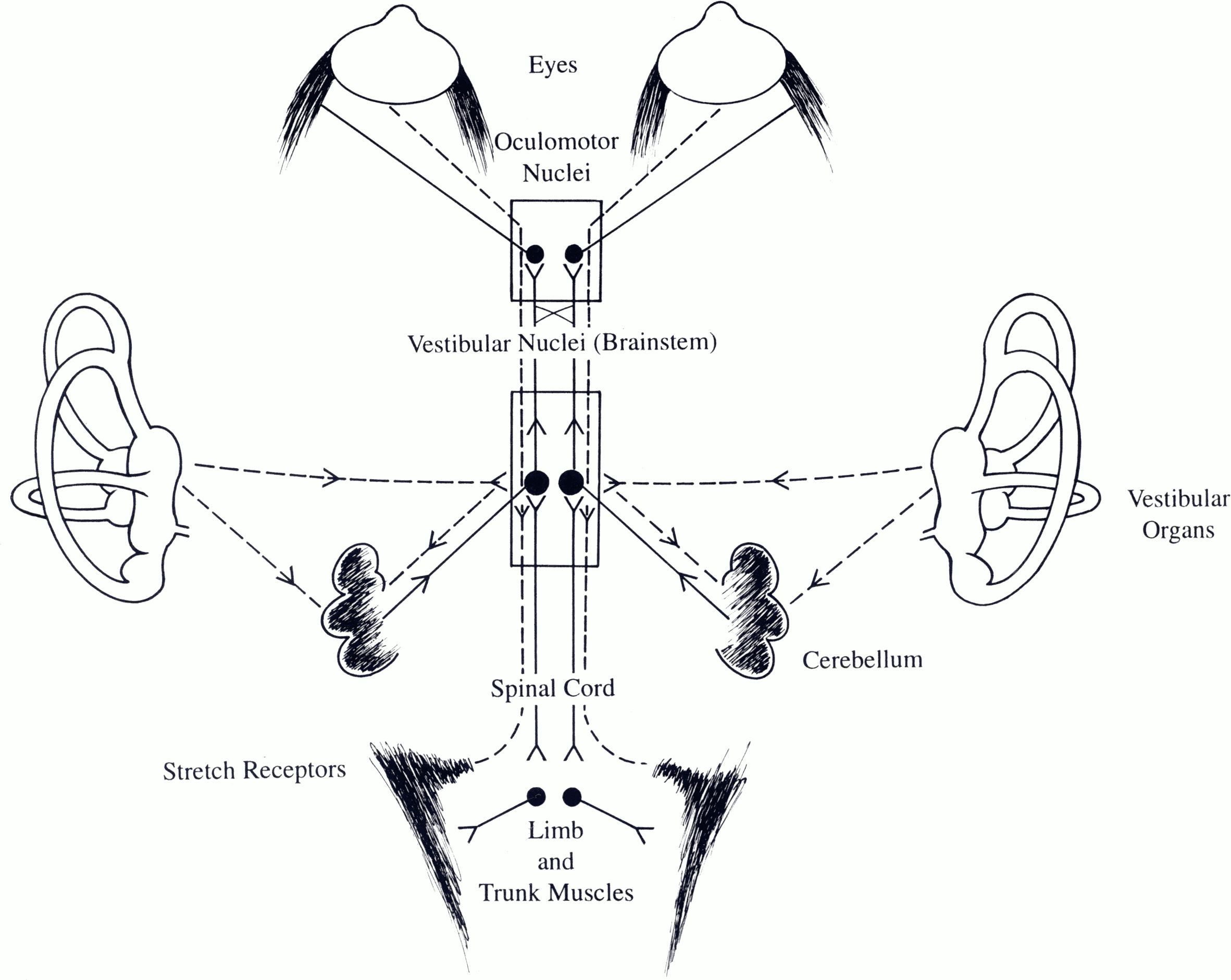The balance system
In health, our orientation to the surroundings depends on information to the brain from the eyes, inner ears and, the skin of the feet and from stretch receptors in joints and muscles. This information is integrated in the vestibular nuclei in the brainstem, the cerebellum and cerebral cortex of the brain. In the inner ear the otolith organs are gravity detectors and detect horizontal movement, tilt and acceleration. The receptors in the three semicircular canals detect rotation of the head. When the head rotates the receptors on one side are excited and those on the other side are inhibited. The eyes attempt to keep a visual grasp of the environment by quick movements in the opposite direction (the vestibulo-ocular reflex). At the same time the vestibular nuclei send impulses to the limb and trunk muscles to contract and preserve balance. Disorders of any of these structures can cause disorders of balance and our sense of orientation.

Schematic diagram of the balance system.
The terms dizziness and vertigo are often confused. Dizziness (light-headed feeling) is a less precise term and can be caused by high or low blood pressure, low blood sugar, cardiac arrhythmias, hyperventilation and as a side effect of medications such as anithypertensives. Vertigo is an hallucination (usually whirling) of motion, most commonly caused by inner ear disorders and migraine (see Causes of Vertigo).
Otolaryngologists and Neurologists specialise in the diagnosis and treatment of vertigo. Audiologists perform specialised diagnostic tests. Physiotherapists specialise in the management of some types of vertigo and balance rehabilitation of patients with neurological and otological disorders, and in the prevention of falls.
- Assoc. Prof. Cynthia Darlington